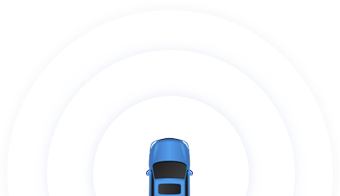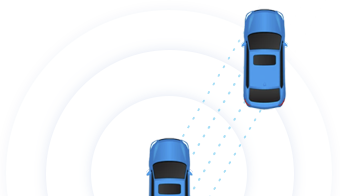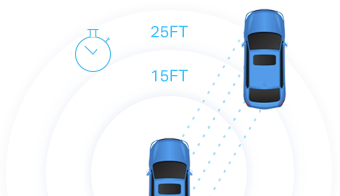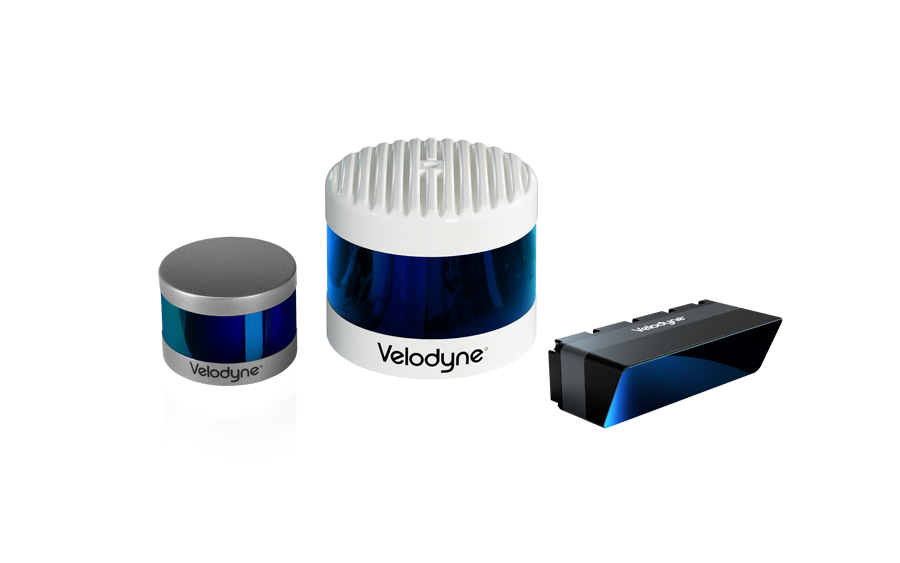Visimind uses Velodyne’s lidar sensors to provide lidar-based solutions for energy companies in vegetation management and more.
Lidar (light detection and ranging) uses eye-safe laser beams to “see” the world in 3D, providing machines and computers an accurate representation of the surveyed environment.



Lidar is an acronym for “light detection and ranging.” It is sometimes called “laser scanning” or “3D scanning.” The technology uses eye-safe laser beams to create a 3D representation of the surveyed environment. Lidar is used in many industries, including automotive, infrastructure, robotics, trucking, UAV/drones, industrial, mapping, and many more. Because lidar is its own light source, the technology offers strong performance in a wide variety of lighting and weather conditions.
A typical lidar sensor emits pulsed light waves from a laser into the environment. These pulses bounce off surrounding objects and return to the sensor. The sensor uses the time it took for each pulse to return to the sensor to calculate the distance it traveled. Repeating this process millions of times per second creates a real-time 3D map of the environment. An onboard computer can utilize this 3D map of the surrounding environment for navigation.
Yes, laser and lidar technology has been used safely for a long time in a wide variety of applications worldwide. Lasers are used today in the public in supermarkets, light shows, and home security systems. Manufacturers follow strict guidelines to ensure the sensors pass eye-safety standards.
Velodyne lidar sensors meet the FDA eye-safety standards under IEC 60825.
Lidar sensors do not drive a car. They provide the 3D vision for the car’s computer and mechanical system to make driving decisions.
Lidar sensors are a key component in autonomous vehicles, providing a high-resolution 3D view of their surroundings. Lidar enables autonomous vehicles to “see” by generating and measuring millions of data points in real time, creating a precise map of its ever-changing surroundings for safe navigation. Lidar’s distance accuracy allows the vehicle’s system to identify and avoid objects at up to 300 meters in a wide variety of weather and lighting conditions. Velodyne Lidar Inc. is the market-leader in 3D lidar technology with over 450 customers globally. As a result, Velodyne’s sensors have been tested, validated, and utilized by companies worldwide.
No. Velodyne is unique in offering a multi-generational family of lidar sensors with 360-degree field of view (FoV). There are certain applications, such as advanced driver assistance systems (ADAS), that do not require 360-degree FoV. In those cases, lidar with a directional FoV are available, such as Velodyne’s Velarray family of sensors.
All sensors have defined fields of view (FoV) and resolutions. Blind spots or gaps in detection might occur based on the combination of sensors placed around the vehicle at specific locations. When multiple lidar sensors are mounted with care, placed to create overlapping FoV around the vehicle, it is possible to minimize or eliminate crucial blind spots.
Sensors such as radar and cameras have weaknesses. Cameras struggle in dark and nighttime conditions and have limited visibility with high glare. Radar data has lower accuracy and resolution, with returned results less detailed than lidar.
Depending on the application and the associated field of view, lidar requirements can range from 8 to 128 laser beams (or channels). For example, a forklift can use a lidar with fewer sensor channels because it moves more slowly than a car. As a robot or vehicle moves faster, the sensor requires more channels to produce images with higher resolution.
Cameras produce 2D images of the environment. Lidar “sees” in 3D, a huge advantage when accuracy and precision is paramount. The laser-based technology produces real-time, high-resolution 3D maps, or point clouds, of the surroundings, demonstrating a level of distance accuracy that is unmatched by cameras, even ones with stereo vision. Whereas cameras have to make assumptions about an object’s distance, lidar produces and provides exact measurements. For this reason, autonomous or highly automated systems require lidar for safe navigation. The ability to “see” in 3D cannot be underestimated. Lidar produces millions of data points at nearly the speed of light. Each point provides a precise measurement of the environment. Compared to camera systems, lidar’s ability to “see” by way of precise mathematical measurements decreases the chance of feeding false information from the vision systems to the car’s computer.
Camera performance is also greatly impacted by environmental conditions (e.g., bright sunlight/glare and darkness) and is therefore more susceptible to unpredictable blind spots and generating false positives or negatives. Whereas cameras are dependent on ambient light conditions and face challenges with darkness and glare, lidar provides its own light source and can therefore “see” in all lighting conditions.
Lidar has an additional technological advantage over camera systems: lidar allows the vehicle’s computer to “see” the driving environment from an overhead, bird’s eye perspective. The car navigates not only from a traditional driver’s point of view, but can also “see” itself from the perspective of a bird flying overhead, similar to the views offered in many video games. Thus, lidar “sees” more comprehensively than a person, simultaneously looking down on all sides of the car, road, and traffic.
With accuracy and safety in mind, a lidar-centric autonomous system is a necessity. This means lidar is the central sensor and small inexpensive cameras can be added to the system for redundancy and extra care.
There is much to be said for redundancy in sensor modality on a system. Lidar should be the foundation of the system, providing the most comprehensive performance across a wide range of road conditions. Cameras, radar and other sensors can provide redundancy for optimal safety.
Higher resolution lidar sensors generate millions more data points, providing the system with even more information upon which to base driving decisions. High-resolution lidar imaging is critical for enabling accurate object detection and classification, helping ensure that the vehicle drives safely and avoids collision. Resolution becomes even more important as the speed of the vehicle increases to maximize safety.
Lidar resolution and object detection are enhanced by the movement of a vehicle. The laser and data points that fall on an object multiply as a car moves down the road, filling in the details of the image. These allow the vehicle’s system to identify positions of pedestrians, traffic signs, and other vehicles. However, the required resolution for object detection increases as a vehicle speeds up. Since there is less time for the process, more lidar channels are needed. As the vehicle approaches highway speeds high resolution is important to accurately detect and classify objects, especially at a distance. A car moving at 65 mph might have only a few seconds to slow down and prevent a collision with an object in its path 200 meters away. Higher resolution enables the car to more accurately identify and classify the distant object early on and avoid collision.
Current lidar sensors typically use one of two wavelengths, either ~905 nanometers (nm) or ~1550 nm. Click here to read more about lidar wavelengths.
We can better understand the differences between these wavelengths by comparing their performance with regards to safety, water absorption, and power consumption.
Safety
Sensors using 905 nm and 1550 nm wavelengths achieve eye-safety certification via compliance with the FDA eye-safety standard IEC 60825. If sensors are designed to meet eye-safety standards, both wavelengths can be used safely.
Water Absorption
Given the variety of weather conditions cars encounter on the road, how a sensor’s laser pulses interact with water is an essential issue for automotive lidar. A key difference between 905 nm and 1550 nm wavelengths is that 1550 nm waves get absorbed by water to a much greater extent than 905 nm waves, as discussed in a research paper published in Opto-Electronics Review. As a result, 1550 nm waves get substantially weakened under conditions of rain, fog or snow compared to 905 nm waves.
Power Consumption
To offset degradation due to water absorption and to achieve high range, 1550 nm systems generally send out more laser light to achieve performance comparable to 905 nm systems. As a result, 1550 nm systems typically consume more electrical power. Higher power could limit the maximum achievable operating temperature due to the challenge of dissipating the extra heat that is generated using higher power. A high-power requirement could also create the need for larger, more extensive equipment which must be stored in the vehicle. In general, the lower the lidar sensor’s power consumption, the more energy that an autonomous vehicle system can devote to other driving functions, such as object detection and avoidance. Click here to read more about power consumption.
